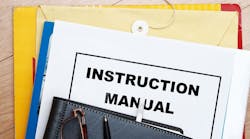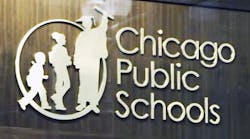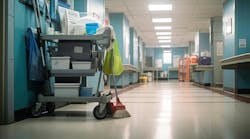In the book, Moneyball, the budget-deprived Oakland A’s strived for a way to compete on the baseball field with deep-pocketed teams like the New York Yankees and Boston Red Sox. Knowing it could not squander its limited resources, A’s management found wiser ways to spend its resources and get a better bang for its buck.
In the world of public schools, this analogy doesn’t quite hold—there aren’t any districts flaunting New York Yankee-like budgets. Nearly every school system—especially those departments responsible for keeping facilities in good maintenance—can identify with the struggle of the Oakland A’s or the Tampa Bay Rays, stuck with inadequate budgets and working tirelessly to overcome those spending limitations to achieve good results.
Taking a Moneyball approach to school maintenance—crafting a comprehensive plan to achieve goals and backing it up with accurate and meaningful data—may help school systems improve the performance of their maintenance department and result in safer, longer-lasting facilities.
“All school systems should have a master plan for the maintenance of all equipment, the training of staff, and a process for assuring that future additions and renovations adhere to high performance standards,” says the Northeast-Collaborative for High Performance Schools Operations and Maintenance Guide.
Parts of the Plan
In Massachusetts, having an effective maintenance plan also can determine whether a school district will receive state funding for facility projects. The Massachusetts School Building Authority (MSBA) has identified best practices that school districts should be using in order to qualify for funds to upgrade facilities.
“The district will be asked to submit documentation that demonstrates that (it) is actively performing routine and capital maintenance to its school facilities,” the authority says.
Some of the best practices identified by the MSBA:
•Staffing: A district should have written job descriptions for custodial and maintenance staff that clearly delineate duties. The training protocol for new hires should include orientation, instructions on operating equipment and major building systems, and safety guidelines. Training also should be provided where appropriate to improve the energy efficiency, air quality and comfort of school facilities, and to ensure that facilities comply with health and safety codes.
•Written manual: A maintenance manual should specify minimal custodial and routine maintenance standards for day-to-day operations; a school system’s philosophy and approach to maintenance; operating instructions for specialized equipment; instructions regarding emergencies and safety issues; and protocols for maintaining healthful air quality and building comfort.
•Facilities Condition Index (FCI): This enables a school system to determine life-cycle costs and decide whether it is more cost-effective to replace or repair building components. It tracks the ratio of the cost of correcting a building’s deficiencies to the cost of replacing the building.
Before the FCI can be calculated, school administrators need to have accurate information about the condition of their buildings. The inventory should include a count of each facility, its age, square footage, and a history that describes any major repairs, renovations or additions. It should list the components found in each building, and the age, location and warranty status of any equipment.
“Collecting building condition information is necessary to provide building managers with the information needed to plan maintenance and capital projects, set priorities and estimate costs,” the MSBA says.
•Preventive maintenance: With an inventory in place, a school system can carry out a preventive maintenance plan more effectively. The MSBA defines preventive maintenance as activities performed regularly to prevent premature failure or to maximize the useful life of a building. A preventive maintenance program should have a detailed list of such activities, including roof inspections, exterior wall inspections, interior flooring and finishes inspections, repainting, door hardware adjustments, window replacement, and belt replacement on HVAC equipment.
•Work-order system: This enables a school system to systematically track planned and completed maintenance work. It provides uniformity in planning maintenance jobs; scheduling a preventive maintenance job makes it less likely that it will be neglected when unplanned maintenance jobs arise. Some school systems may still use manual work-order systems, but the MSBA says that a computerized maintenance-management system improves efficiency and enables maintenance managers to compile and analyze data more easily.
•Building inspections: To carry out preventive maintenance efficiently, school systems should have a system to regularly inspect facilities and their components. Using a standardized checklist of components as part of an inspection makes it more likely that an inspection of a facility will be consistent with previous inspections and make year-to-year comparisons more accurate.
The inspection plan also should have a detailed schedule of inspections for each building and the components it contains; a regular schedule for testing safety equipment such as alarms; a way to store and retrieve the data collected; and a way to connect to the school system’s work-order system to schedule work for problems uncovered in inspections.
•Commissioning: This process seeks to verify that a facility is operating as the school system intended and that building workers are prepared to operate and maintain the building’s systems and equipment. A school system should commission new buildings or existing facilities that have been renovated or substantially modified. Five years after a building’s initial commissioning, school systems should re-commission a facility.
The result of adopting such best practices in maintenance management should be evident in the appearance of the facilities themselves.
Sidebar: Promoting energy efficiency
Keeping tabs on the conditions of a building exterior will help a school system maintain the energy efficiency promised when a building opens.
“Continual attention to the building envelope is necessary if energy costs are to be controlled,” says the Northeast-Collaborative for High Performance Schools Operations and Maintenance Guide.
The guide says schools should include these steps in maintenance of the building envelope:
•Inspect exterior walls and roofs for the deterioration of materials and the growth of molds or algae.
•For masonry construction, check mortar should for cracking and re-point as needed.
•Remove or trim trees and shrubbery growing close to buildings that might contribute to mold and fungus damage, or block access for maintenance.
•Inspect windows and doors for signs of failing caulking and weatherstripping.
•Inspect and seal or reseal all envelope penetrations (pipes, vents, ducts, conduit).
•Inspect all transitions from one envelope element to another (foundation to walls, walls to roof, wall assembly to wall assembly).
•Inspect insulation for signs of water absorption from leakage or from vapor diffusion. Wet insulation is a prime area for mold growth.
•Clean rain gutters and downspouts to ensure that water is transported away from the building.
•Consider hiring a firm to perform infrared photographic thermal imaging/scanning of the building envelope to identify areas of excessive air leakage, insulation gaps, and wet or deteriorated insulation.
•Consider hiring a firm to conduct blower door testing to evaluate the air-tightness of small areas.
Kennedy is staff writer for AS&U.


